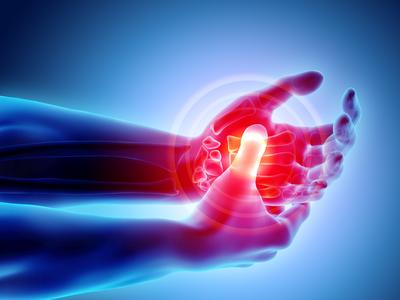Fashion detoxes are a no-drainer
Every summer there seems to be a new diet fad or a detox plan promising health miracles and beach-ready bodies, but the ugly truth is, they don’t really work. Detoxification, especially, is a complex process that requires knowledge and experience to bring about results.
In short, there’s a lot more to detoxing than drinking green tea for a fortnight. The simple truth is, the body has to prepare for detox, and that means clearing the channels that allow your body to flush out toxins. Imagine your organs are drainpipes, these need to be unclogged and open if any detox programme is to be successful because detox is actually the process of driving toxins out of the body through these organs.
For this reason, drainage is imperative to wellness.
“Drainage is the process of organ preparation,” explains our resident Naturopathic Practitioner Wellness Coach Dina Gavarieva.
“A lot of people think that if they drink a couple of green juices a week, they will detox their bodies, but a proper detox procedure requires time, effort and a lot of patience.”
When detox goes bad
The human body is a remarkable instrument blessed with a complex system of organs, vessels, and tissues that will clear away the debris of normal life – such as waste, toxins, and pathogens – as long as these organs are able to do their job. This is why fine-tuning the body’s drainage system is such an essential first step when treating conditions such as Lyme disease and other chronic illnesses.
“You cannot start detoxing out of the blue, you need to prepare your body for detox,” explains Dina.
“If the detox is done without preparing the organs, people will experience headaches, nausea, feelings of being unwell, chills and flu-like symptoms. This is because they are mobilising toxins in their tissues, but the toxins are not being excreted because the organs are still clogged. So, the toxins will redistribute in the body.
“This way of detoxing is incorrect and unsafe, especially for chronically ill patients.”
Working from the top to the bottom
Adhering to the laws of gravity, the “drain chain” starts at the brain, and if drainage is compromised at any point along the body’s pathway downhill, everything below is compromised as well. According to our visiting naturopath, Margit Taubmann who has her own clinic in Germany, thin people are especially susceptible to toxins in the brain.
“Most of the toxins are in the fat tissue. If you are thin you will find these toxins in what little fat you have, but mostly they will be in the brain. When you crash diet and lose a lot of fat it can sometimes be dangerous because you mobilise all these toxins.”
Drainage occurs in the brain through the lymphatic system, a process that has only recently become known (for more, see the link below). Before this discovery by neuroscientist Dr Maiken Nedergaard, it was generally believed that everywhere but the brain had a lymphatic system.
Lymph vessels in the brain grab toxic cerebrospinal fluid (CSF) and deliver it to the body’s lymphatic system for removal, particularly the lymph nodes in the sinuses and neck. If this pathway is blocked, toxins build up in the spaces around the brain cells.
As well as neurotoxic heavy metals and environmental toxins, the brain also needs to purge itself of extracellular solutes like amyloid-beta; a protein made and secreted from cells in the brain that has been linked to dementia. So, improving glymphatic clearance of solutes might delay or even prevent neurodegenerative disorders like Alzheimer’s, Huntington’s, Parkinson’s, amyotrophic lateral sclerosis (ALS) and motor neuron disease (for more, see the link below). A build-up of toxins in the brain has also been linked to mood swings, brain inflammation, infections, and autoimmune concerns.
After the brain, comes the body’s lymphatic drain. Sometimes called the second circulatory system, this is a network of organs, ducts, nodes, vessels, and fluids that form an essential part of the body’s immune system. It plays a pivotal role in fighting infection while supporting cardiovascular function and transporting nutrients.
Lymph is a clear fluid similar to blood plasma that circulates through the lymphatic system. It contains white blood cells called lymphocytes and clears debris, waste and bacteria to the lymph nodes so they can be destroyed and discarded. Antibodies produced by lymphocytes kill foreign invaders and stop infections from spreading.
Therefore, an open and free-flowing lymphatic system is crucial to the function of the next drainage stop – the liver.
This amazing organ is the detox lifeline of the body. Liver detoxification is a two-stage process that pushes 80% of toxins into the bile it produces. This is then secreted through ducts into the gallbladder for storage. When food is consumed, the gallbladder is squeezed to release bile to neutralize stomach acid so the digestive process can proceed to the small intestine. Bile also functions to emulsify fat contained in food.
When toxins and pathogens enter the bile, it causes it to become thick and sludgy, which clogs the drainage process. The body then responds by producing less stomach acid, which in turn, leads to an insufficient breakdown of food and acid reflux and, potentially, Gastroesophageal reflux disease (for more, see the link below).
Basically, clogging of the bile duct can result in chronic illness and disease because the body struggles to remove dangerous substances. Parasites are also able to take up residence and they bring their own form of interference that can lead to gallstones that further prevent the free-flowing bile drainage that needs to flow into the colon and kidneys. If the colon cannot remove waste, it creates a backlog in the “drain chain”, meaning the kidneys will become stressed and they won’t be able to effectively hydrate the colon to enable it to do its job.
The kidneys, as most people know, remove fluid and waste from the body. The kidneys produce urine, which is removed from the body via the urinary tract. The urine carries urea, a waste product of protein breakdown, and other toxins with it.
“Everyone needs to eliminate harmful substances from the body,” Dina stresses. “When we don’t they accumulate in the tissues and cause chronic and degenerative diseases. All chronic illnesses are associated with an elevated toxic load.
“When we work to detox the body, a lot of the symptoms of chronic illness subside, and it is easier to deal with infections and pathogens that thrive in toxic environments.”
Home preparation
While seeking professional advice is paramount to a correct and safe detox, there are a number of ways that people can help protect their bodies, and number one on the scale of all DIY protections is diet. Eat well, eat organic and eat your greens … as well as your reds, your yellows and your blues! Drink clean, filtered water. Fit a filter in your shower. Remove any fillings in your teeth and use a headset when you speak on the phone.
“Electromagnetic radiation is real and it can stall your efforts to detox,” warns Dina. “Also make sure that you do not have mould in your house. This is crucial! Mould toxicity is one of the big contributors to chronic illness.”
As for those summer miracle weight-loss plans, it’s rarely a good idea to switch to the salad without investigating the possible causes of hard-to-shift weight gain.
“It could be the wrong diet,” admits Dina, “however, an inability to shift weight might also be due to hormonal issues or stagnant bile and liver issues or emotional eating problems, high levels of toxicity or even a lack of movement.
“That’s why it’s probably a good move to work with a specialist.”
Brain study: https://www.ncbi.nlm.nih.gov/pmc/articles/PMC5347443/
Alzheimer’s: https://www.ncbi.nlm.nih.gov/pmc/articles/PMC2813509/
Liver: https://pubmed.ncbi.nlm.nih.gov/1749210/







